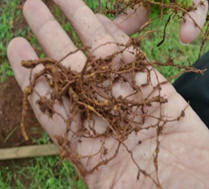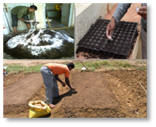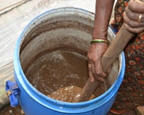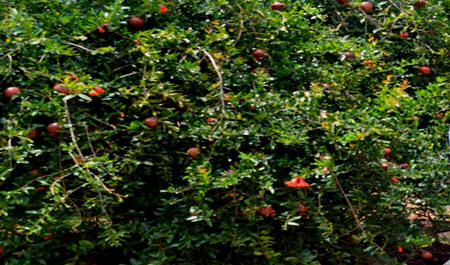Nematode management in Pomegranate

Nematode management in Pomegranate
Nematodes constitute one of the major limiting factors in fruit crop production. They cause extensive root damage resulting in serious economic consequences viz., fertilizers are not effectively utilized, the period from planting to harvesting is extended, drastic reduction in fruit or bunch weights, the quality of fruits is impoverished and fields have to be replanted every 2 to 3 years because of drastic reduction in plant numbers. Furthermore, roots damaged by nematodes are easy prey to fungi which invade the roots and accelerate root decay. The root-knot nematode Meloidogyne incognita is the major nematode pests that infect pomegranate, causing extensive root galling.
Symptoms
Common above ground symptoms of root knot nematode infection in pomegranate includes yellowing, stunting, wilted leaves, leaf dropping, drying of branches and decline in productivity. Underground symptoms included root galls and partially rotted roots. In association with the wilt causing bacteria, there is extensive rotting of roots and death of plants within months.
Management of nematodes in pomegranate
Sanitation:
· Use of nematode free saplings for planting
· Removal and destruction of nematode infected saplings or trees
· Maintaining the orchard free from weeds and alternate hosts
Nematode management in nurseries
Treatment of soil mixture used for raising pomegranate rootstocks
• A ton of soil mixture has to be mixed with 50 -100kg of neem cake or pongamia cake enriched with the bio-pesticides such as Paecilomyces lilacinus, Pseudomonas fluorescens and Trichoderma harzianum.
• 5 kg of Carbofuran / phorate can also be added to one ton of soil mixture.
(Procedure of enrichment of neem cake / pongamia cake with bio-pesticides: Mix 3 - 4 kg of each of Paecilomyces lilacinus/ Pochonia chlamydosporia, Pseudomonas fluorescens and Trichoderma harzianum / T. viride in one ton of neem cake / pongamia cake and leave it in shade for 20 days at 25 – 30% moisture for multiplication of beneficial microbes).
Nematode management in orchards
• Apply 3 – 4 kg of bio-pesticide enriched vermicompost/ Farm Yard Manure/ compost per plant once at an interval of 3-4 months.
• Mix 20 kg of bio-pesticide enriched neem cake / pongamia cake in 200 lit water, leave it for two days. This can be used for drenching at 2 – 3 lit/ plant or filter it thoroughly and use it for sending along the drip, once in an interval of 15 – 20 days.
• The filtered suspension can be used for spraying the crop or can also be used as spray fluid for spraying micro nutrient mixtures.
(Procedure of enrichment of neem cake / pongamia cake with bio-pesticides vermicompost/ FYM / compost: Mix 50 - 100 kg of bio-pesticide in ton of vermicompost/ FYM / compost, leave it under shade for 20 days. Maintain an optimum moisture of 24 – 26%. Mix it now and then. Cover it with leaf mulch or soil or polythene sheet. After 20 days FYM gets enriched with billions of propagules of bio-agents and it is ready for use).







